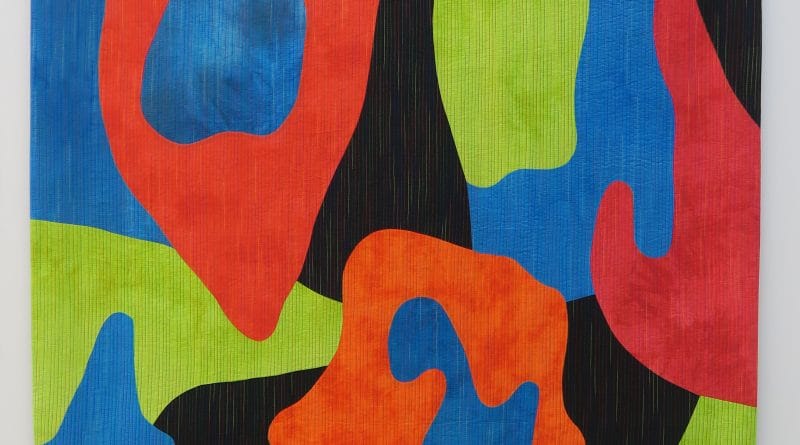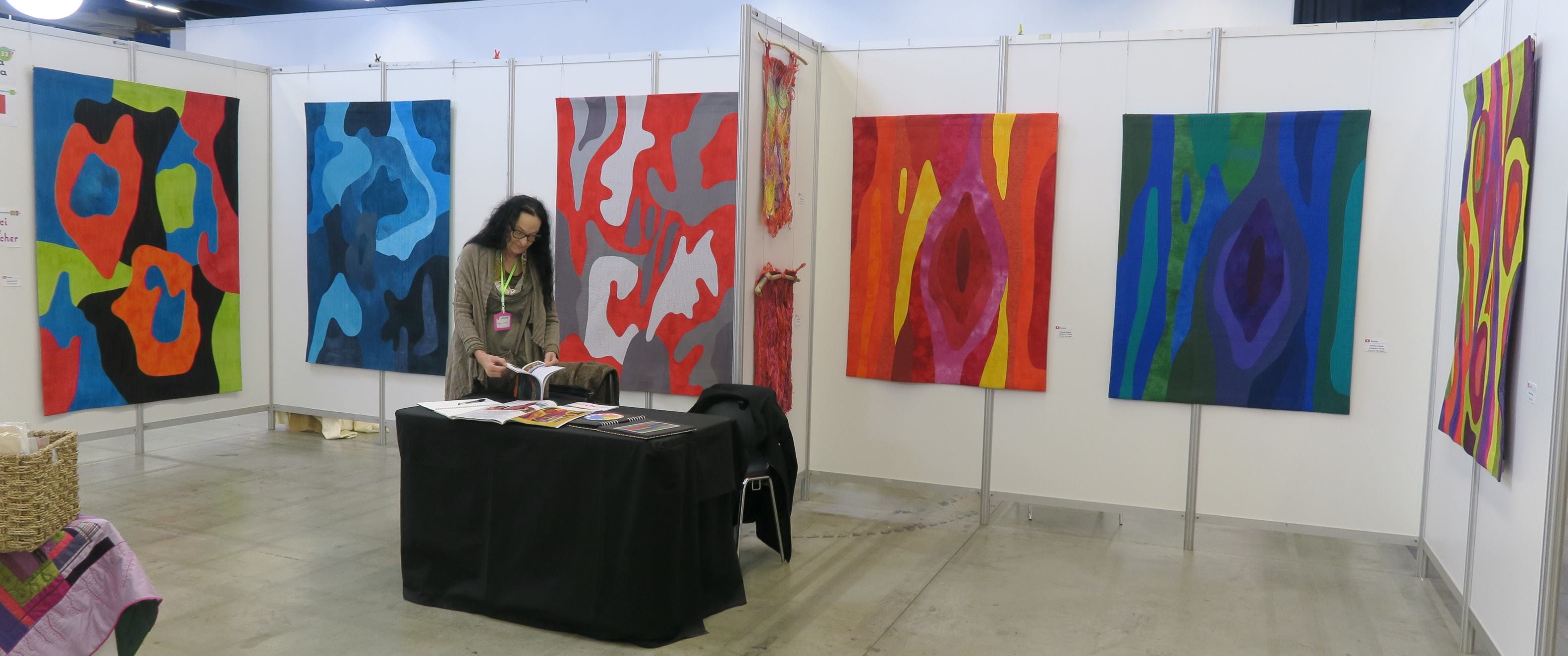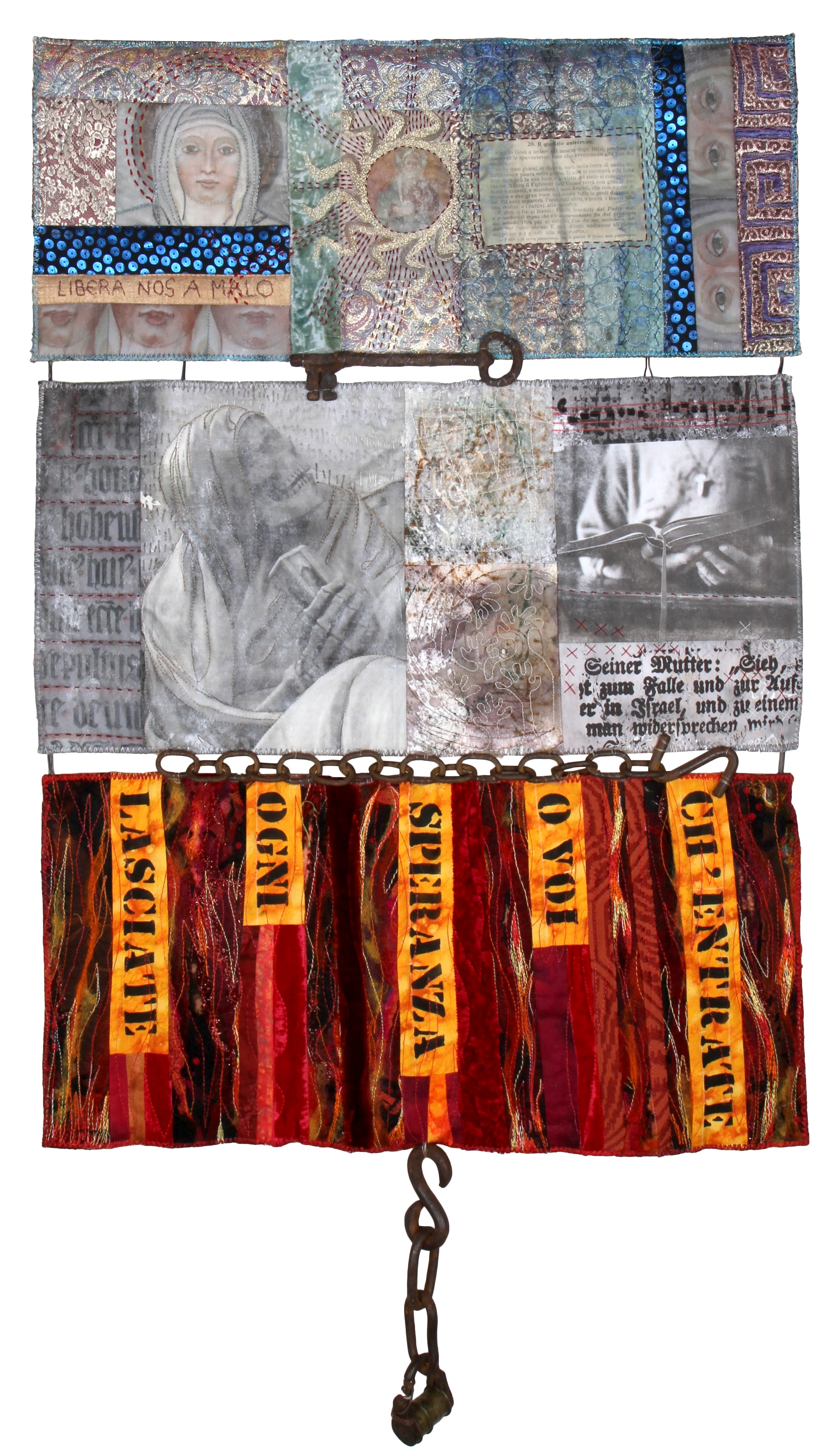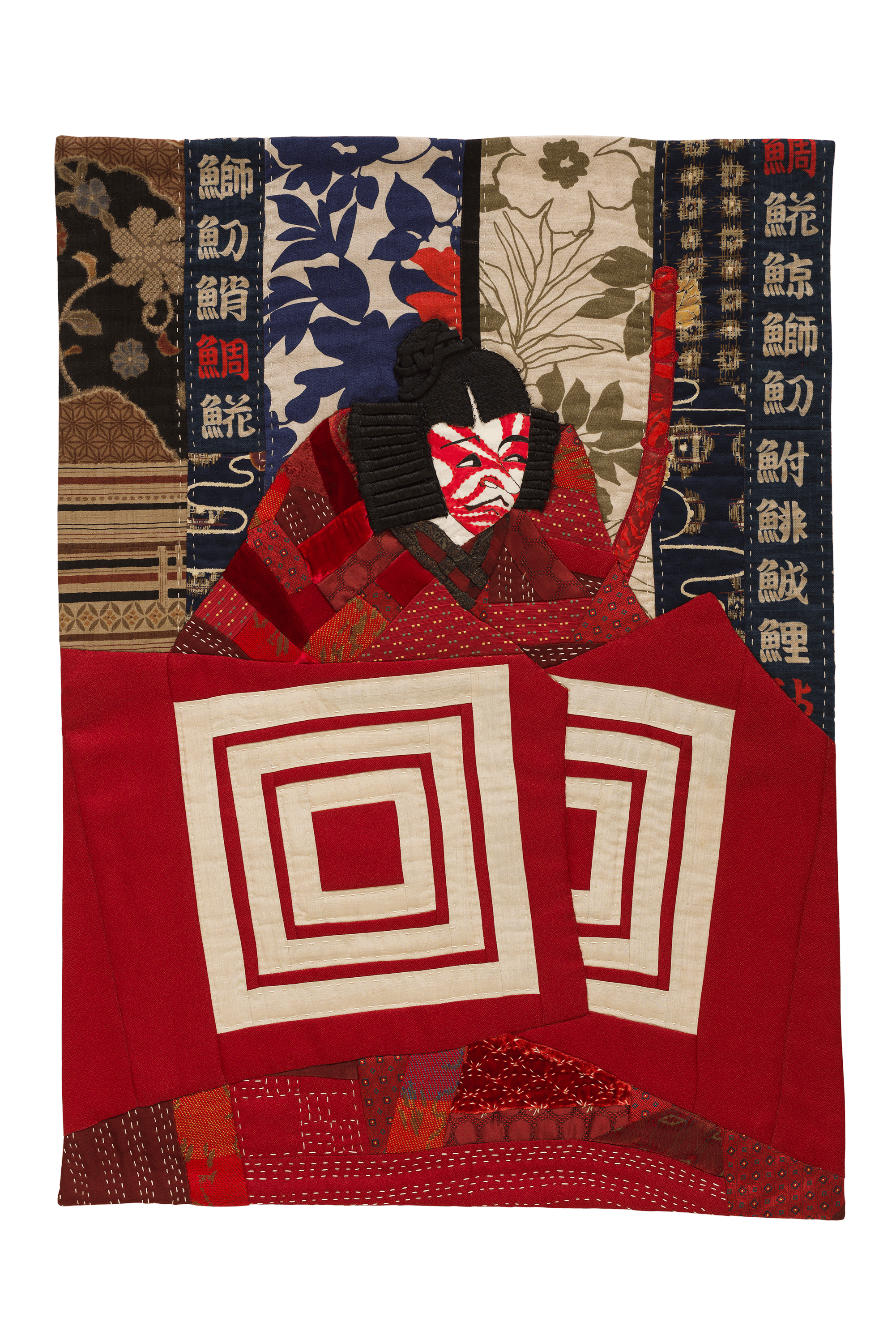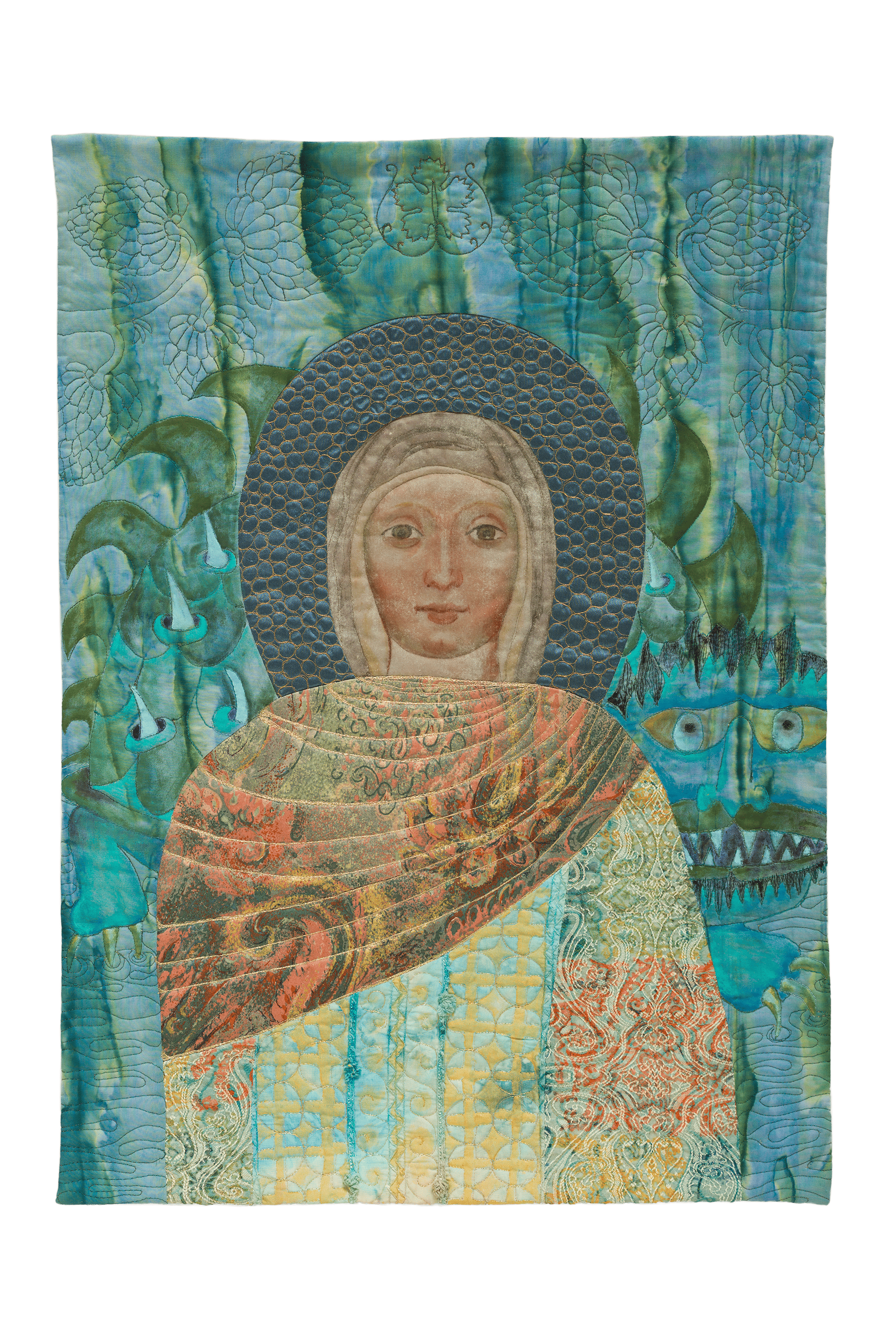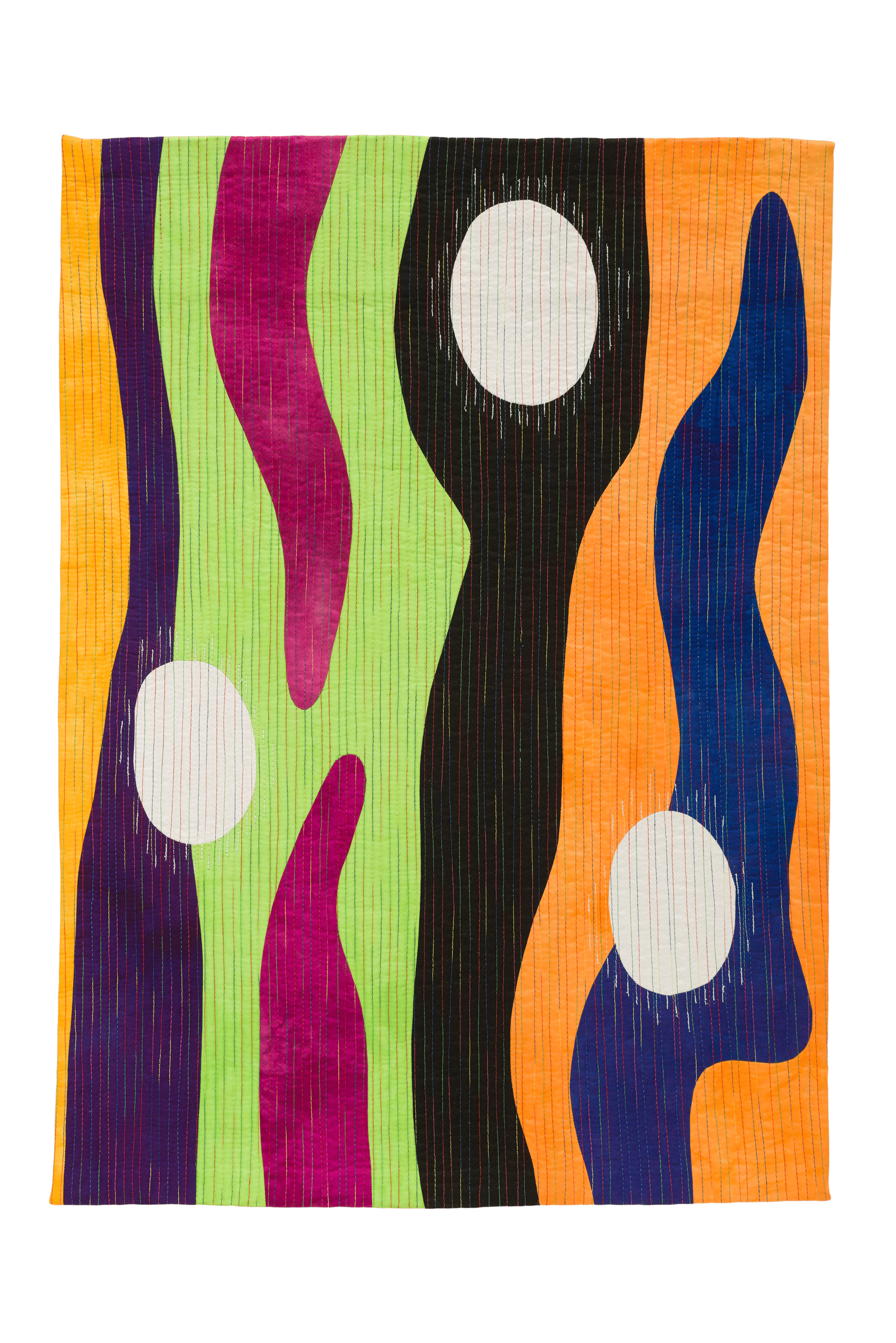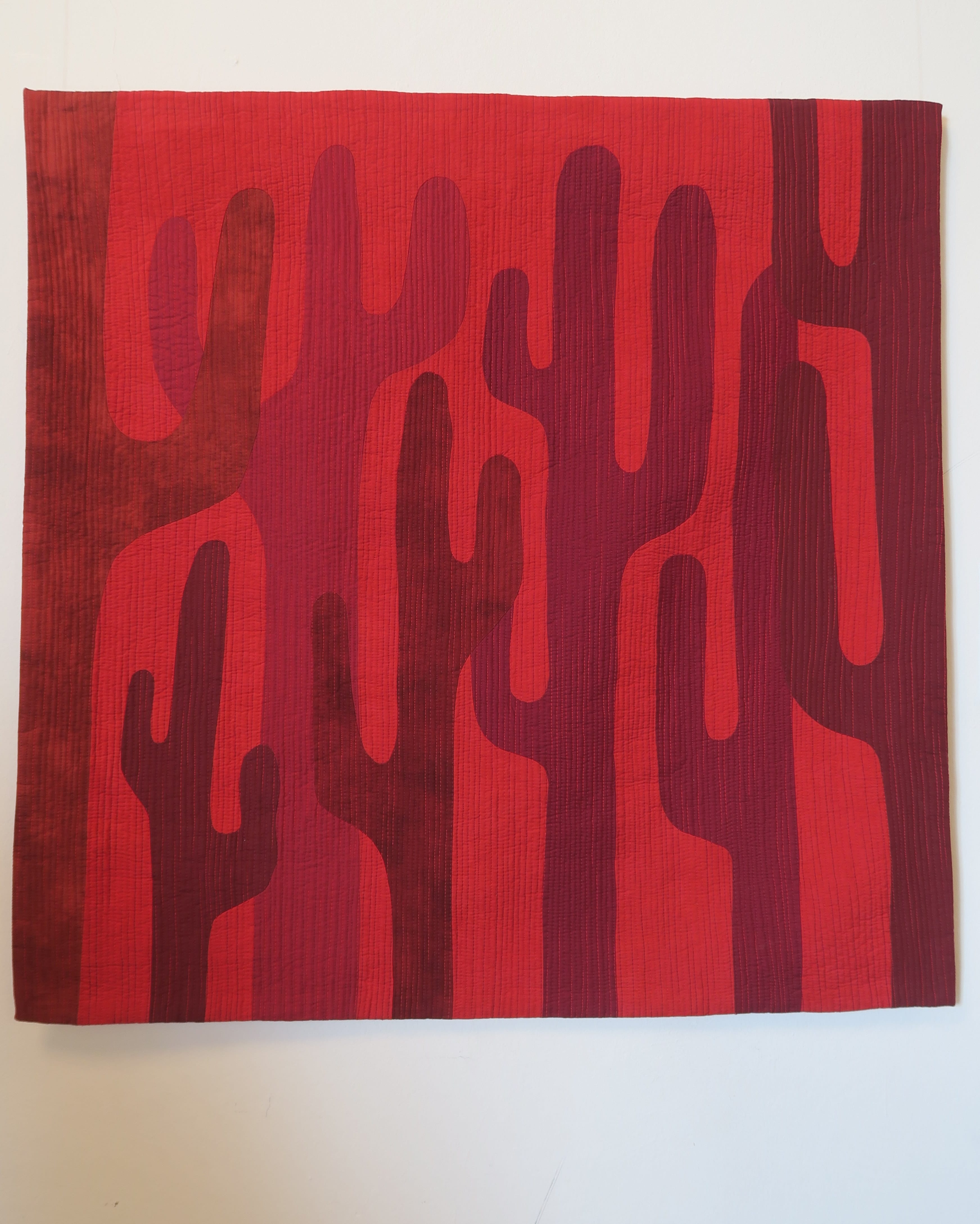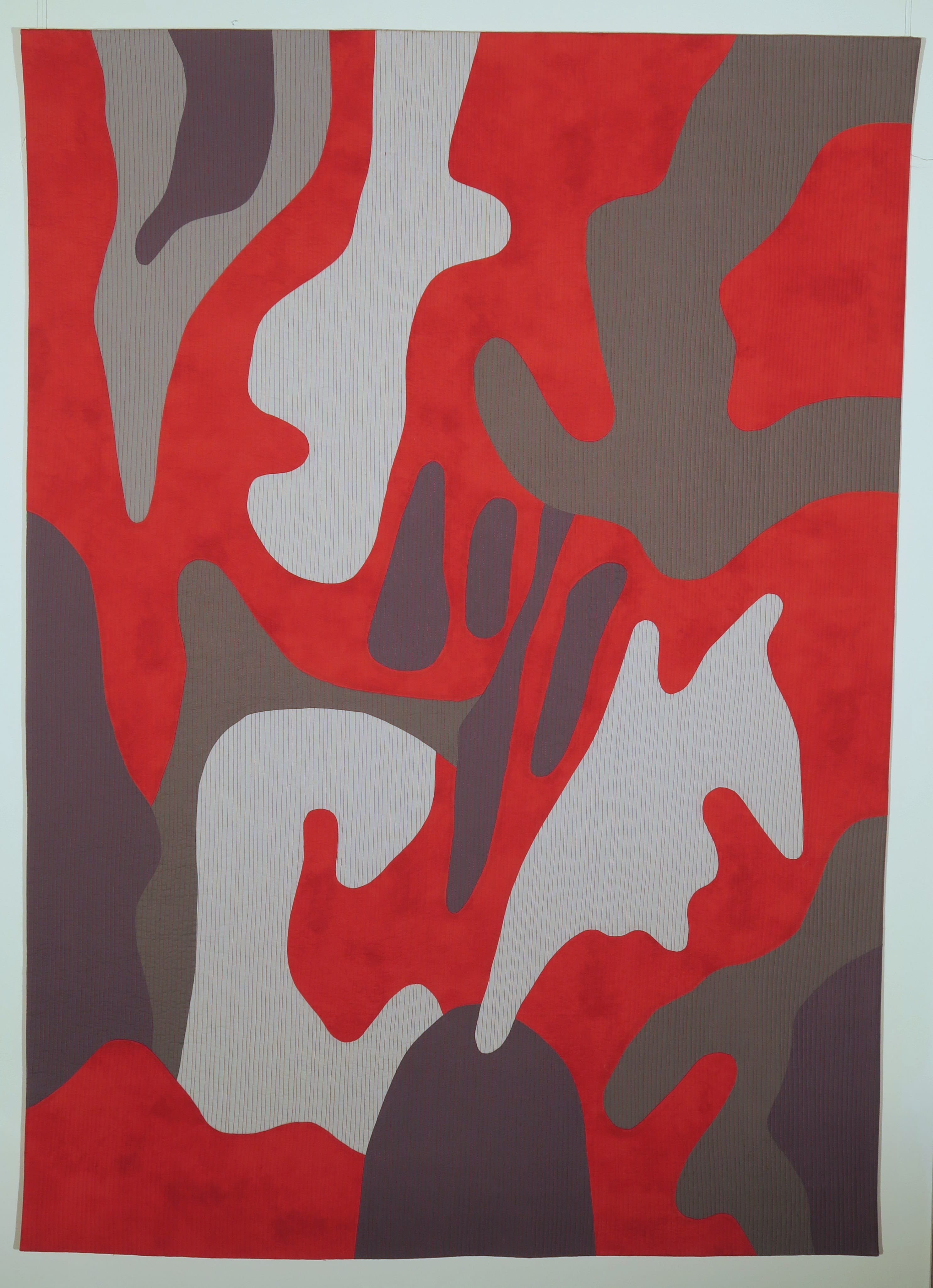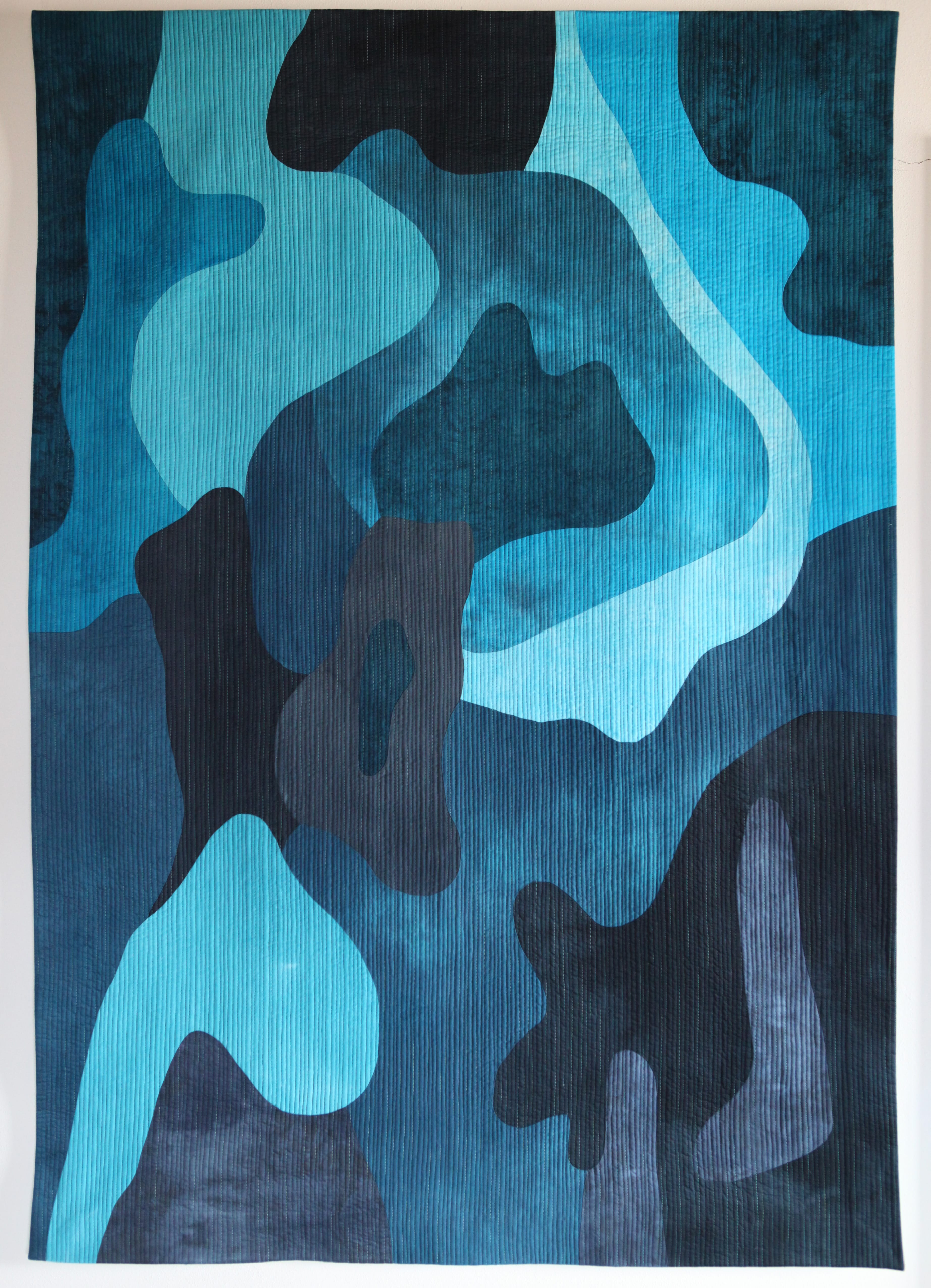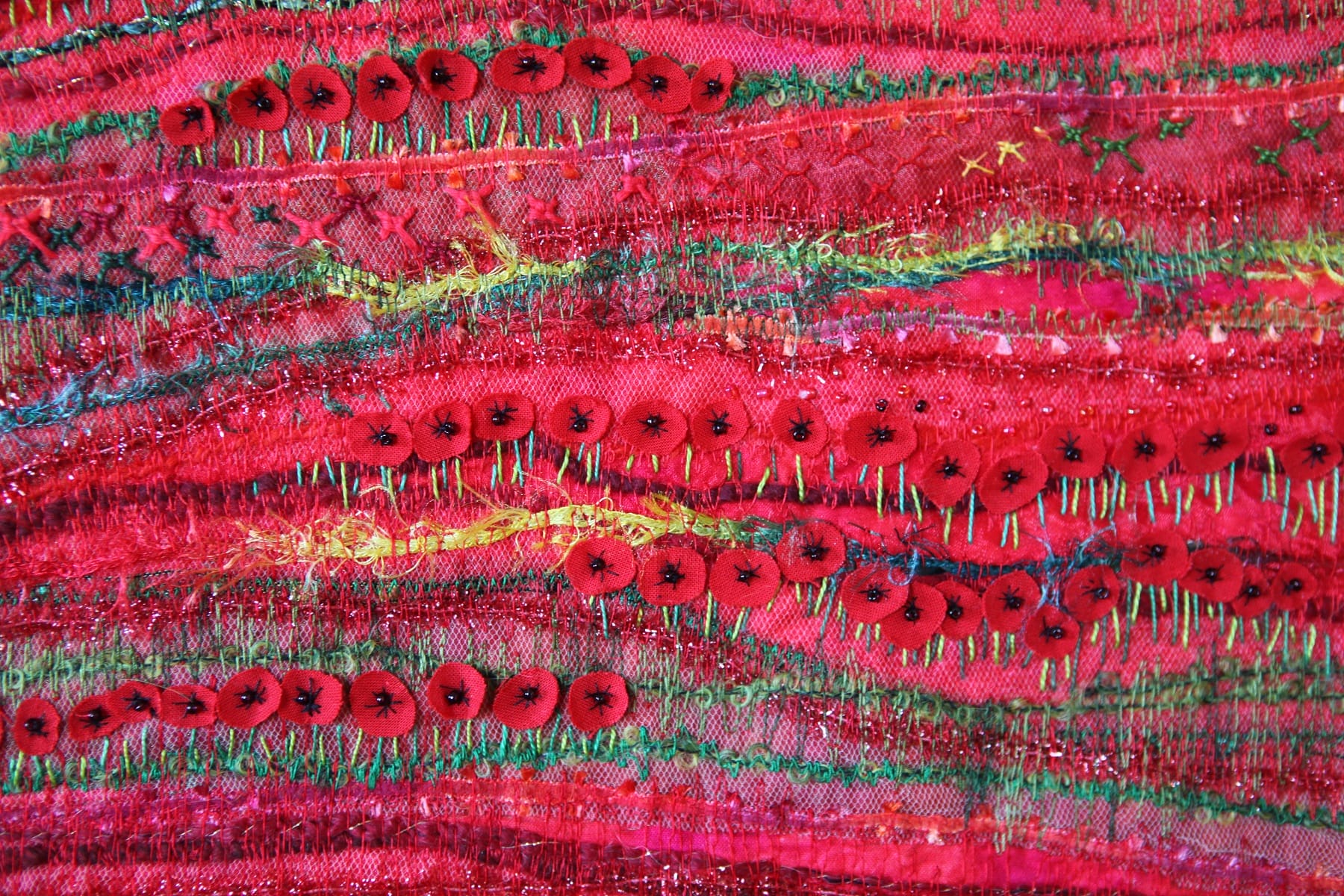Interview with Paola Zanda

Paola tells us her story as an artist, how she started, when she discovered quilting and all the great satisfactions that her art is giving her.
I was lucky enough to grow up in a textile environment, my grandmother a milliner and my mother an inspector for women’s work in primary schools.
I was practically born with a needle in my hand. Already at an early age I learned how to sew, embroider, knit, crochet and use the sewing machine.
To the delight of my dolls I created and sewed a wardrobe to make a queen envious.
I was very attracted by colors and I always said that I would choose the florist or dressmaker as a profession.
After having finished my school education, I had to choose, and the dressmaker prevailed over the florist.
After three years in dressmaking school I got my diploma with honors.
Thanks to this result I was able to access higher education and become a Teacher in sewing qualified to teach in primary schools, a profession that I have carried out for 35 years and with full satisfaction. I have been in early retirement for a year now.
I was able to engage and convey my passion to many children and my greatest satisfaction is seeing that many of them have chosen a profession in textiles or teaching.
The joy of seeing two of my former pupils take my place as a teacher has alleviated the difficult choice of leaving school.
My approach to Patchwork is a consequence of my profession.
From there comes my curiosity and desire to learn, and it led me to attend numerous courses: felt, paper making, wax working, calligraphy and many others.
In 2002 I started with country style, that with its naive and fairy-like characteristics, is likely to appeal to children.
In 2005, I met Ramona Conconi who at the time had a shop and held classes.
And here begins my story with patchwork, from her I learned the various basic techniques and started to make my first quilts that were not linked to any artistic creativity but rather to the idea of how to use the techniques for my work with children. Everything was always processed thinking of the school environment and I never thought that one could create art in this field.
“ArbreMaculé”, 135X194 cm, foto della mostra, Copyright Paola Zanda
Paola Zanda has exhibited her work in many group exhibitions in Europe, Mexico and China, her artwork has received awards and critical acclaim.
Below is a link to the artist’s website:
Copyright Paola Zanda
How did you start and why did you choose textile art?
Textile was inevitably part of myself, starting from my family to the professionchosen, it was an integral part of my life. What didn’t appear yet was my artistic spirit. The spark had yet to strike. In the school environment I created small works that were much admired but always linked to the naive and fairy-like world. I never thought that one day I would be able to create Art with textiles. My knowledge was linked to the images of traditional patchwork, which, even though I admired its finesse and quality, did not attract me.
In 2007, visiting Quilt Art Lugano and MiniArtTextil in Como, I discovered textile art, but it was at the Briançon Patchwork Festival that the spark broke out. I get to know Sylvie Ladame and Sophie Furbeyre and the attraction becomes stronger and stronger. Thanks to my husband Paolo I start to visit the most important festivals:
“Patch Mountains” in Morzine, “Aigu’IllesenLuberon” and in Alsace at the “Carrefour Européen du Patchwork”.
I discover materials, fabrics, paintings, transfer techniques. An incredible world opens up, hitherto hidden and that invites me to create and experiment.
Thanks to this, my knowledge of the world of quilt art increases and I begin to refine my visual education.
In 2008 Paolo, my husband, gave me as a present a course with Sophie FurbeyreinMorzine.
Afterwards I attended several courses with internationally renowned artists abroad or in Lugano thanks to the Tex Art Academy of Marlis Egger.
In this period Ramona Conconi closes the shop and decides, with the aim of keeping in touch, to create a group with her former students, and asks me to be part of it. This is how the “Happy Fingers” group was born.
We worked independently on a theme chosen in common. The only rule was the size of 50×70.
It was a school of discipline because you learned to respect deadlines, develop ideas, compare and share.
After two collective exhibitions in 2013 and 2016, it was decided, by mutual agreement, to dissolve the group in order to each develop our own ideas and take our own paths.
How has your style changed since your first artwork to date?
At the beginning my works were rather figurative, combining the transformation of the material withthe inserting of different techniques. I also loved to work in relief. My works were very appreciated, and even though they were well made, I didn’t deviate from the routine creations. I felt that that wasn’t my path and that I was missing something.
Thanks to the Tex Art Academy, I was able to attend a one-year Master’s degree with Linda Colsh.
I learned a lot, what was missing was the artistic approach and the teaching was very fruitful. Linda really appreciated my figurative work and my technique, but she advised me to move towards the abstract.
At first I was a bit lost and I didn’t know which way to go.
My passion for the artist Giuseppe Penone and his work on trees gave me the idea.
I started studying the barks of trees, developing abstract and minimalist shapes that I combined with colors and I started working in series.
To enhance the work of composition and highlight my sewing technique I decided to move to larger sizes.
In addition to my personal work I am part of the international group “Fifteen by Fifteen”. We are a group of fifteen artists. Every two months we have a challenge on a theme, the only rule is the size of 15X15 inch. Here I can use and practice all the techniques I want
https://fifteenquilts.com/
“Taxus Bark”, 108×143 cm, copyright Paola Zanda
How do you conceive a new work?
The inspiration is always the bark, I start by observing a detail, then I take a picture and from there I create a sketch. Using watercolors, I start to study the matching and balance of colors. I enlarge the drawing to the desired size and create a model. I start trying the fabrics on the surface and during the work the project may change. I don’t use computer means because I am not an expert in IT. I would like to work using a sketch book but I’m too instinctive and I can’t work this way. I work directly on the art work.
Are there Textile Artists who have played a decisive role in the evolution of your creative process?
As mentioned above, Linda Colshhelped me to understand, without imposing any kind of style on me, where to turn in the artistic field. Thanks to a course with Uta Lenk, I rediscovered the art of dressmakingwhich I added to my assembly technique.
What kind of fabrics do you prefer?
I mainly use satin cotton because of its shine. When I have time I dye my fabrics with Procion MX colours.
Otherwise I have two reliable artists to turn to for the right range of colours.
In some cases I have used commercial fabrics but always solids or texture.
“Falling Shapes”, 122×171 cm, copyright Paola Zanda
Can you tell us about the techniques you use to create your works?
All my works are piecés. There is no appliqué. It’s a challenge for me to manage the fabric and in some cases the curves are very demanding, for some pieces I have to work for a long time. I’m a perfectionist and if I’m not satisfied with the work, I’ll do it again even if it’s a titanic undertaking. It’s a painstaking job, but once it’s done, the disbelief, enthusiasm and compliments I get from people for the precision of my curves make me happy of having made the effort.
It takes a lot of practice to perform this technique and my six years of dressmaking have served me very well.
Once the top is assembled, I machine quilt everything with a simple vertical design to highlight the abstract and minimalist shapes and give them depth and movement. In some cases, I use varied threads to create a game of contrast.
Paola, what advice would you give a textile artist in his early days?
I’m still old-school. To be able to work well you absolutely have to know the techniques.
Then you can experiment and create. If you have the possibility, following an art school helps a lot. I see that a lot of artists come from the world of Art Schools and then moved on to Textile. If you have the time and possibility, go visit exhibitions of all kinds. The important thing is to refine your taste and create a cultural base.
Let your creativity run free and don’t make the mistake of copying the trend.
How do you see your artwork in the near future?
For the time being, the study of bark is still great and the theory of colour is very broad.
I’ll probably try to study the details of one single theme, but I’m still studying.
Now that I’m retired I have a lot of time and I can produce more.
Next year I already have a couple of exhibitions planned and since, out of respect for the visitors, I don’t like to present myself with the same quilts, I am working on new works. I will wait for you with great pleasure to show them to you and listen to your impressions.
